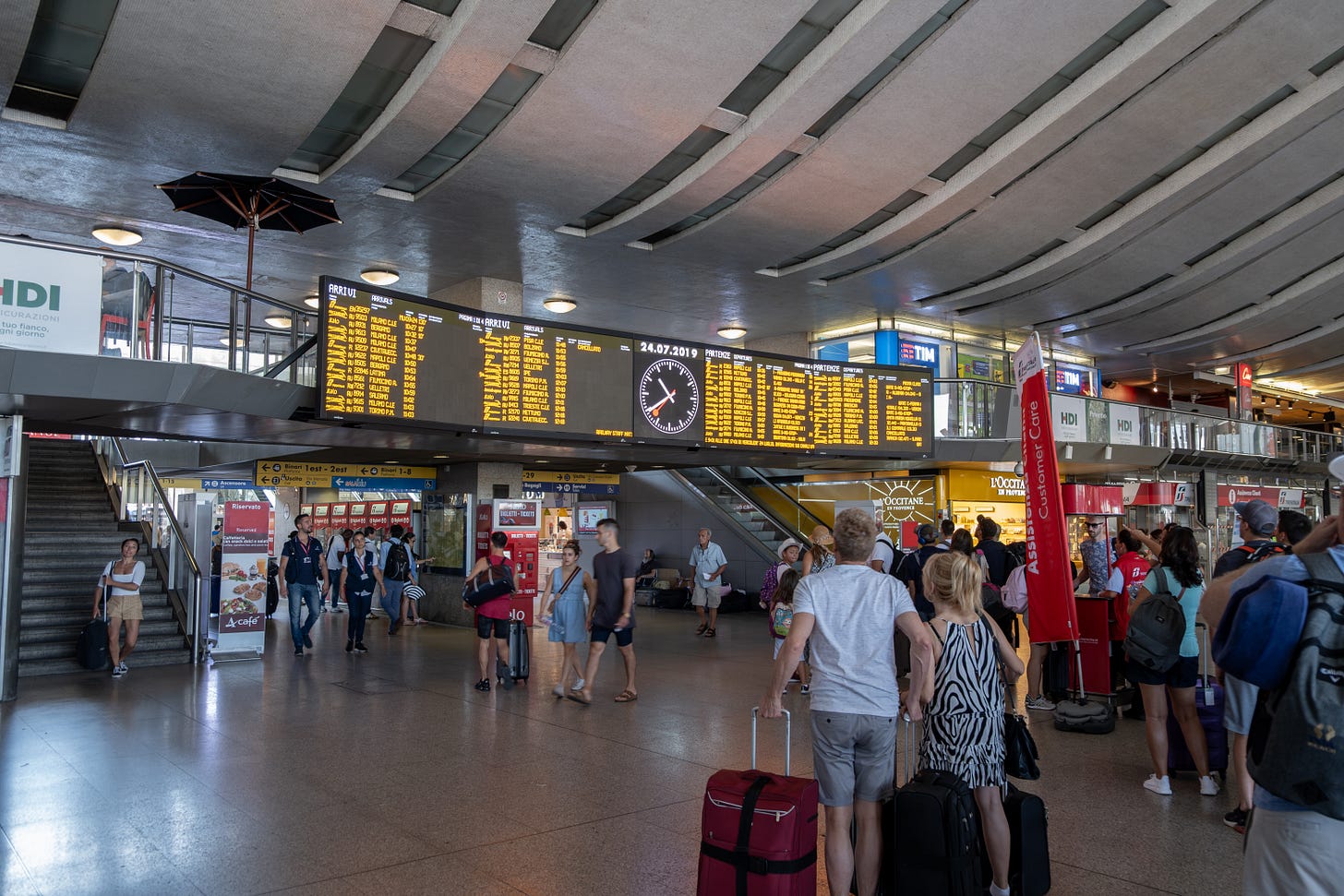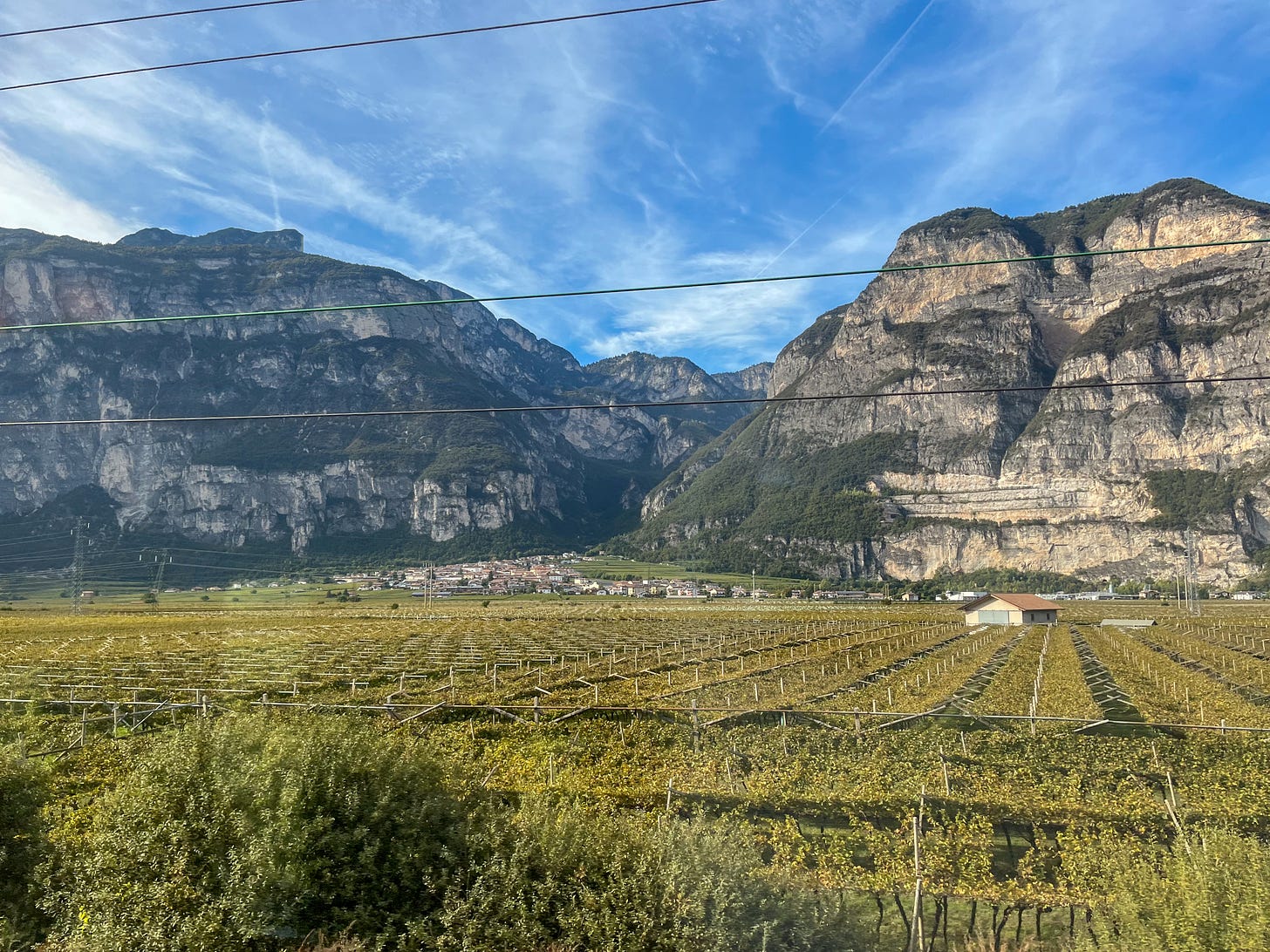Train Travel in Italy
Traveling by train in Europe is a unique joy for American tourists. Despite the size of America, or perhaps because of its continental reach, train travel in the U.S. is rarely utilized by us. In Europe, with its grand capital cities situated with relatively short distances, train travel has long been an affordable and convenient means of seeing these varied cultures across the continent. How do I put this gently? The reputation of Italian train travel has traditionally lagged behind its larger neighbors in France or Germany. But times have changed, and it’s easier than ever to travel from north-to-south and across Italy in trains that are fast, clean, and enjoy levels of service on par with the rest of the Continent. I certainly wouldn’t say they are 100% on time -- this isn’t Tokyo -- but where’s the fun in that anyway?
Primary Types of Italian Train Travel
• Regional trains run shorter distances and on less frequent timetables than other types of service. They are also generally slower and stop more frequently. But what they lack in efficiency, they make up for with access to more remote cities and towns … which we like! These trains come in all shapes and sizes. There are no reserved seats on these trains and no food options onboard. But you’re welcome to bring your own food or drink. Further, the cars may or may not be air-conditioned and will likely have less storage for luggage.
• InterCity trains connect cities across regions and are faster than the regional trains reaching speeds of up to 160 kilometers per hour (100 mph). They normally have open plan seating with a center aisle and seats on either side. But there are still classic side corridor trains with compartment seating on certain routes. (Think of the Hogwarts Express on the Harry Potter movies!) These can be fun if you’re traveling with a larger group and you can grab a compartment together.
• High-speed (or “Frecce”) trains also connect cities across the country at greater distances (such as Rome to Milan) but they reach speeds of up to 300 kilometers per hour (190 mph.) The most common train is the Frecciarossa (“red arrow”) and, beyond their speed, they feature multiple classes of comfortable service, food coaches onboard, and free WiFi. Less common are the Frecciaregento (“silver arrow) and Frecciabianca (“white arrow”) trains. They travel at slightly slower speeds than the Frecciarossa and operate on particular routes where they can make use of older rail networks. But they offer the same levels of service as the Frecciarossa.
At any large train station, you will see other types of train service but Regional, InterCity and Frecce are the primary movers. I’ll describe some of these others types of services later in this post.
Reservations
Some important details on the process of making train reservations in Italy. Remember that there are reservations and there are seat assignments and they are not the same thing. As we will see, some trains require reservations and others do not. Unless you’re traveling last minute on Regional trains, I would recommend that you make reservations and seat assignments in advance to avoid hassles. Reservations and seat assignments on InterCity and high-speed Frecce trains are REQUIRED. We will discuss important issues related to regional trains tickets below but be aware that they are easy to get and the process is similar to other European countries.
Regional Trains
Regional trains normally do not require reservations but you can still make them in advance using any of the online services (see below) or apps. Buy tickets at the train station on the day of travel using a Trenitalia ticket machine or at the ticket office (look for signs for ‘biglietteria’). The ticket machines are multilingual and easy to navigate. Regardless, these tickets need to be “validated” using one of green machines that you will see when you enter your train’s track/platform (or “binari”.)
Increasingly, these validation kiosks offer contactless payment (using your credit card or phone via Apple Pay or Google Pay) so you can purchase (and validate) your ticket electronically. This has become more common after the COVID pandemic and is increasingly available on popular regional train routes. You tap to board the train and then tap again when you disembark at which point you are charged for the journey. Importantly, using contactless bank cards, you can only purchase for one individual. (Parents traveling with children take note!) In the Resources section below, I will provide a link to regional routes that have the “Tap & Tap” functionality.
If you book in advance online, you will not need to validate any tickets. Bring your phone or the paper receipt you received in email with a scannable code, and you’re good to go. If you purchase tickets in advance, there are rules about making changes to the reservation. Being Italy, it’s a bit complicated so I urge you read the rules carefully when you purchase. But, in general, if you need to cancel regional trains reservations, do so at least the day before. You can change the reservations up until the day of the travel but they are no longer refundable.
InterCity & High-Speed Trains
InterCity and high-speed “Frecce” trains require advance reservation & purchase. But “advance” can mean months before at home … or an hour before at a kiosk. These trains rarely sell out completely so you can book them at the station on the day of travel. However, the fares will be more expensive that way and you will likely not get to choose your seat. I try to always book a few weeks (at least) in advance and make seat selections. If you are the type of person who likes the have physical copies of things, you can print out the reservations or the email confirmation before you travel. They will contain a QR or scannable code that you can bring onboard the train for the conductor to check. Trenitalia or most other reservation providers will likely have apps for iOS or Android phones that will keep your reservation confirmations. One person can book for others -- but make sure they’re all on the train together and have ID in case it’s necessary.
If you purchase your tickets at a kiosk or at the ticket office on the day of travel for InterCity or high-speed trains, you will not worry about validating them; that is limited to same day Regional tickets.
Fare classes are also worth a mention. The further in advance that you book your fares, the better the prices will be. These are “economy” or “super economy” fares in contrast with “base” rates. There are also other special fares but they often require membership in Trenitalia frequent traveler clubs and may not work for you. Read carefully before booking.
CLASS OF SERVICE
On Regional trains, things are simple. Many of these trains are single class; and, where it’s available, the difference between first-class and second-class carriages is less noticeable.
On InterCity or high-speed “Frecce” trains, second class is perfectly fine for most travelers. If you want to splurge, first class offers a more quiet experience with slightly wider seats; and often the upgrade doesn’t cost much more. Many long distance Frecce trains feature a dedicated food carriage; and some classes feature a glass of prosecco and a snack service during the trip. Bathroom service, in my experience, about the same level of cleanliness as any busy U.S. airline. Serviceable, if not luxurious.
HOW TO BOOK
Booking travel can be done from a variety of online agents but I tend to go directly to Trenitalia.com -- the official site of the Italy’s state-run train system. You can customize your language choice (Italian or English) and see schedules and fares based on time of date and service class. In the resources section below is my list of recommended online booking online sites.
OTHER TRAIN TYPES
In addition there are also other notable types of train service you may notice at train stations in Italy. Here is a non-exhaustive list of some:
InterEuro: As you might guess, these are trains that connect Italian cities with others across Europe. One thing to note about routes that cross national borders: generally, InterEuro trains are operated by the rail service of the country in which they orginate. So a train from Paris to Torino is a French operated train (that’s usually SNCF.) So booking that train would require you to make a reservation with that entity.
InterCity Notte: Overnight trains in Europe, like the “Notte” can be a lot of fun and will probably merit their own post. Within Italy, they can save you time while traveling and give you more time to explore the country. Most likely, you’ll take one from another country arriving in Italy. There are many options and types of overnight service so research carefully (until I can write up a post on them!)
Special Routes: There are several unique, specialty routes that you may come across in your research. A few of these include the Sicily Express: an InterCity train that actually boards a ferry to cross the Strait of Messina. There’s a train that runs Naples to see the historical sites at Herculaneum and Pompeii.
Italo: Another high-speed option is Italo. Italo is a private company that uses the same high-speed rail system as the Frecciarossa and offers excellent intercity high-speed service within Italy at speeds up to 360 km/hr.) I have taken them and found them to be excellent options. Booking is done easily in advance (online or via their app) and at the station.
LAST MINUTE ADVICE
Train station layout: Train stations in Italy run the gamut in terms of size and shape. But all will have a large information board showing departure and arrival times. Most will have food & shopping options. (In Rome or Milan, there are are like mini shopping malls.) Note that the the location of the tracks (or binari) can sometimes be confusing. At some stations, you may need to take stairs under the tracks to get to a particular platform but they are well marked and it’s not difficult.
Get on the right train!: At the entry point to you train platform, you will see a prominent sign indicating the number of the binari and the unique train number for your journey. Make sure the number matches your reservation. You may be rushing and many of the trains can look alike.
Get on the right carriage!: To avoid getting on the wrong carriage, look on your ticket or reservation. it will indicate the specific carriage that you’re booked on and this is not the same as the class of service. Check before you get on and get settled! In the rush to get onto your train, it’s very easy to get on the wrong carriage. I’ve done it myself and then had to hump heavy bags back out and onto the right one. (On the other hand, it does amuse/annoy the locals.)
Fun fact: On most trains, you can bring your own food (and even your own wine) onboard; it’s allowed!
Beware of pickpockets: It has never happened to me and I don’t think it’s as big a problem as in the past, but train stations in Italy — as anywhere in Europe — are a magnet for pickpockets. Keep valuables in front pockets or in tight fitting backpacks or slings to avoid giving anyone an easy target.
Luggage: On InterCity and high-speed trains, there is ample room for luggage and carry-on bags. Large bags often have areas near the entry to carriage for storage. In addition, these trains also have overhead storage throughout the carriages for smaller bags. Regional trains have much more limited storage areas so plan accordingly.
Train strikes: Train strikes in Italy are an unfortunate occurence which can affect your travel. In my experience, you will likely hear about the possibility of a strike in advance as they tend to make the news in Italy. I have never been directly affected myself, but they’re a possibility worth mentioning.
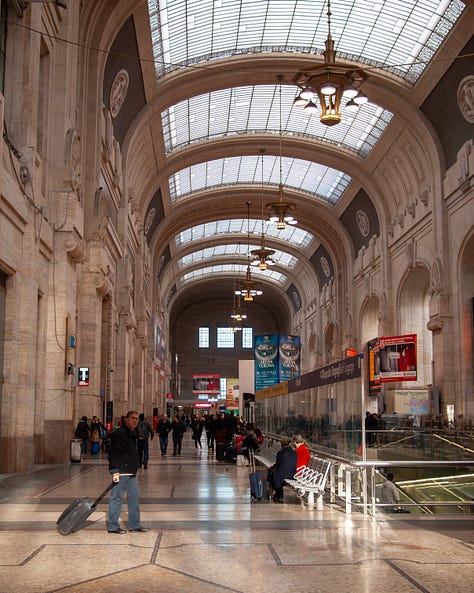
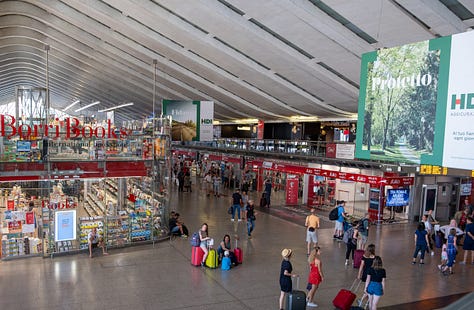
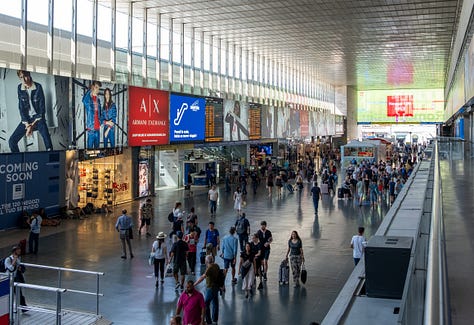
BOOKING & INFORMATION RESOURCES
Booking direct with Trenitalia
Booking Italian train travel via Italiarail
Booking European train travel via Trainline
Booking Italo high-speed travel
Seat61.com: My go-to source for train travel help and tips worldwide, but excellent details on Europe, in particular.






